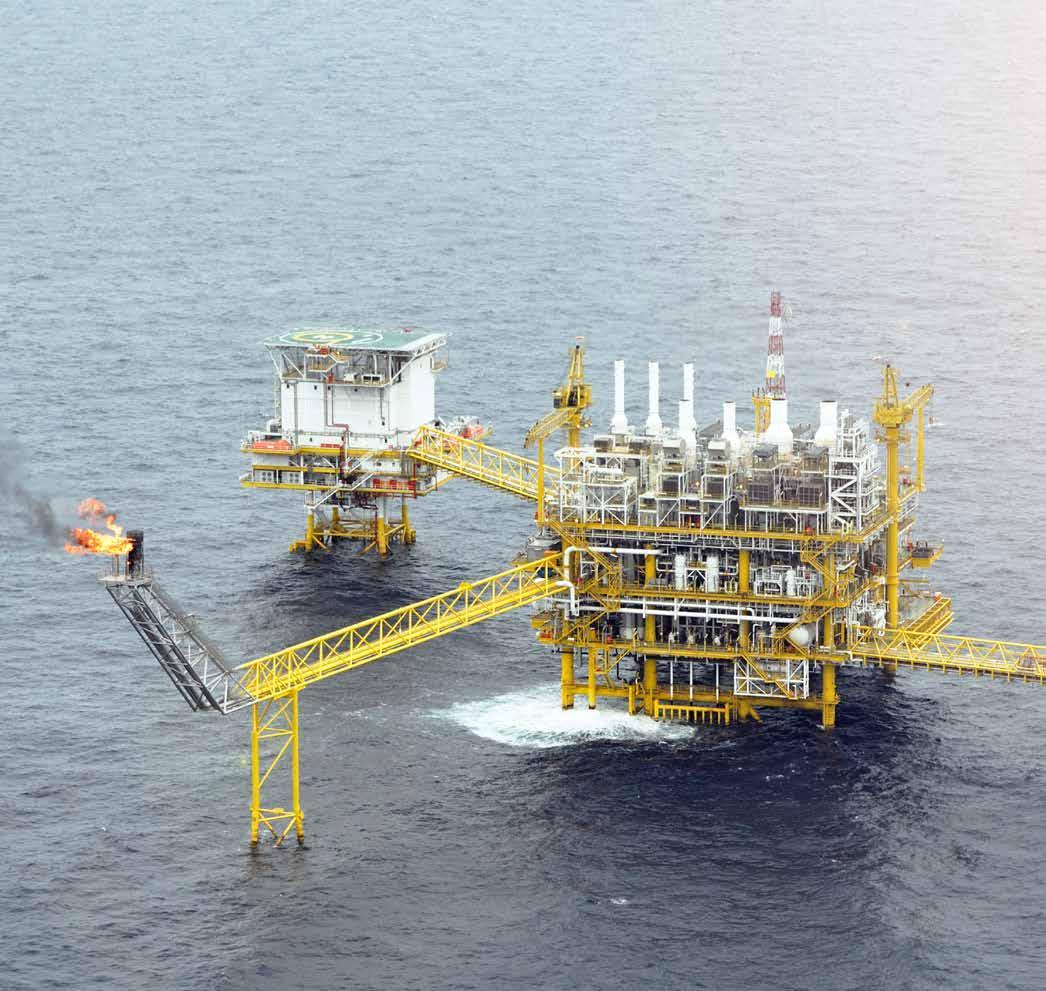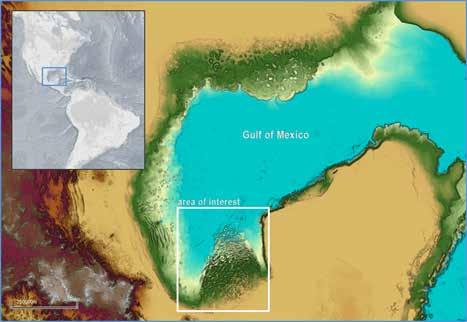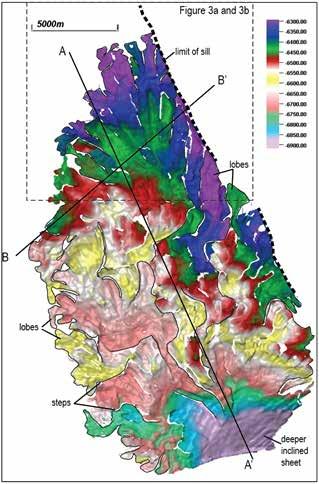
4 minute read
Características intrusivas

Estos hallazgos tienen varias implicaciones para la exploración en aguas profundas. También son importantes para comprender la evolución de las cuencas frente a las costas de México
Por / By : M. El-Toukhy, C. Rodríguez, J. Hernández, S. Villarroel, K. Lyons y E. Galván
Los ingenieros identificaron los rasgos intrusivos anómalos de alta reflexión de los estratos sedimentarios de la era Eocena en las costas del Golfo de México. Tras una exploración regional frente a la cuenca de Salina del Istmo, hallaron rasgos asociados con la estratigrafía sísmica y la geomorfología. Ellos sugieren la presencia de intrusiones ígneas en un área aproximada a 1000 km2 de la zona de transición libre de sal entre las costas continentales y oceánicas.
Los expertos utilizaron datos de reflexión sísmica en 3D de un volumen de gran acimut, banda ancha e imágenes de profundidad de 250 metros a 3,750 metros. Con ello, concluyeron que las intrusiones identificadas atravesaron la estratigrafía y perturbaron considerablemente los estratos sedimentarios. Esto pudo causar el emplazamiento de umbrales y el desarrollo de diques y respiraderos hidrotérmicos.
Los ingenieros también apuntan que los respiraderos hidrotérmicos, formados por la liberación de fluidos del magma o del fluido de los poros calentados, pudieron ser responsables de la formación de cráteres en el suelo marino de la era Miocénica. Por su parte, los alféizares, diques y respiraderos hidrotérmicos también pudieron
Intrusive Elements in Deep Sea Exploration
These findings have many implications for deep-sea exploration. They are also important to understand the evolution of basins in the Gulf of Mexico.
Engineers have found high-reflection and anomalous intrusive features within the Eocene-era sedimentary strata off the shores in the Gulf of Mexico. After a regional exploration in the Salina del Istmo basin, they identified features associated with seismic stratigraphy and geomorphology. Both suggest the presence of igneous intrusions in an area approximately 1000 km2 of the salt-free transition zone between the continental and oceanic coasts.
For this process, experts used 3D seismic reflection data from a large azimuth volume, broadband, and depth images from 250 meters to 3,750 meters. With this, they interpreted that intrusions crossed the stratigraphy, which considerably disturbed sedimentary strata.
This is due to the placement of thresholds and the development of hydrothermal dams and vents. The hydrothermal vents formed by the release of fluids from magma or fluid from heated pores may have been responsible for crater formations on the ocean floor in the Miocene era. Also, hydrothermal windowsills, dikes, and vents have significant impacts on the porosity and permeability of potential reservoir rocks. The experts interpreted that these failures could be triggered by the intrusions. Given their nature, they are highly likely to favor the migration of hydrocarbons into deep-sea clastic systems from the deepest source rocks. Thus, the study shows that, on the one hand, igneous intrusions can increase the maturity of source rocks. On the other hand, intrusions also increased the values of the heat flux at the time of the magmatic event that occurred in the Lower Miocene.



impactar significativamente en la porosidad y permeabilidad de las potenciales rocas reservorio.
Los expertos interpretaron que esas fallas pudieron ser desencadenadas por las intrusiones. Dada su naturaleza, ellas tienen gran probabilidad de favorecer la migración de hidrocarburos hacia los sistemas clásticos de aguas profundas desde las rocas fuente más profundas.
Así, este estudio muestra que, por un lado, las intrusiones ígneas aumentaron la madurez de la roca fuente. Por otra parte, las intrusiones también elevaron regionalmente los valores del flujo de calor en el momento del evento magmático del Mioceno inferior.
Las interpretaciones sísmicas realizadas en 3D también revelaron el emplazamiento de probables umbrales ígneos durante el Mioceno inferior. En ese periodo también se formaron diques y respiraderos hidrotérmicos que interrumpen la sobrecarga sedimentaria.
Las intrusivas ígneas estudiadas se ubican en una zona relativamente menos deformada de la cuenca de Salina del Istmo. Ahí, los ingenieros ubicaron varios indicios de fallas y posibles fracturas de los sistemas clásticos de aguas profundas, los cuales son propensos a formar depósitos de hidrocarburos desarrollados en los periodos intraoceno e intramioceno.
Seismic interpretations made in 3D also revealed the location of probable igneous thresholds developed during the Lower Miocene. During this period, hydrothermal dams and vents were also formed that interrupt the sedimentary overburden.
The igneous intrusives studied are in a relatively less deformed area of the Salina del Istmo basin. There, the engineers located several indications of flaws and possible fractures of the deep-water clastic systems, which are prone to hydrocarbon deposits formed in the intraocene and intramiocene periods.





